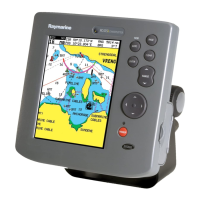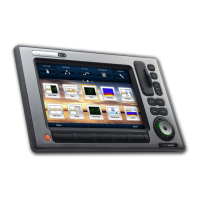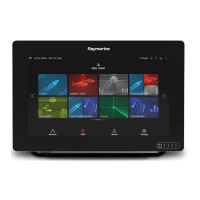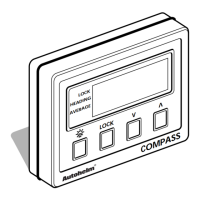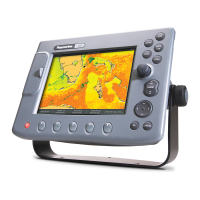Chapter 2: Getting Started 17
2.3 Using Chart Cards
The chartplotter has a built-in world map that can be used for route
planning. Most areas are covered on a scale of about 500nm per inch on
the screen (200nm per cm), although some populated areas have
details down to 300nm on the screen.
To use the chartplotter as a navigation aid, charts with detailed
information for the area you wish to navigate are required. The charts
are available on C-MAP NT electronic chart cards (C-Cards), each of
which can store as many as 20 charts in an electronic format. A single C-
MAP chart normally provides as much information as is available in
paper charts for that geographic area, and can be displayed down to a
range of 1/64nm on the screen if the data is available.
Two card slots are provided on the display unit. Chart data from both
slots can be downloaded.
The chart scale in use is indicated in the status bar - the number
represents the distance (in nautical miles) displayed from the top of the
screen to the bottom of the screen.
Note: You can remove and insert cards while a chart is displayed. The
chart information is retained on-screen until the chartplotter redraws the
screen: for example, when you pan outside the current area, or use the
RANGE key to change the chart scale.
Data on a chart card is also available to a repeater display, which can be
used independently of the master. When the master display is switched
off chart data is retained on the repeater screen until the chart is
redrawn.
Inserting a Chart Card
➤ To insert a chart card:
1. Check that the card is a C-MAP NT C-Card with the required chart
stored on it.
2. Open the card cover, at the lower left of the display front panel.
3. Hold the card with the title label towards the left and upside down, as
shown in the illustration.
4. Gently push the card into one of the two slots. It will only go in if it is
the correct way round. Push the card in as far as it will go, then move
it to the right so that the top is under the retaining pegs. The card will
be held in place by the pegs.
Using
Chart Cards
